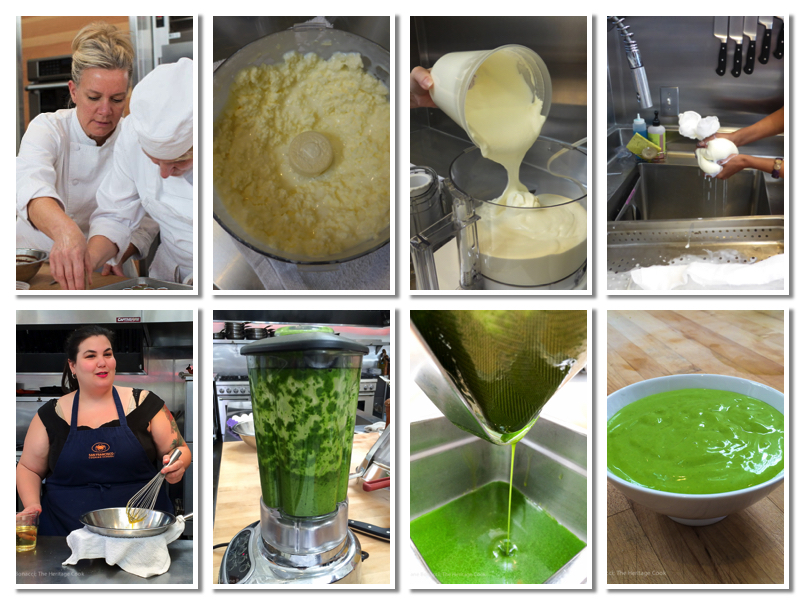
Learning how to make butter and herb mayonnaise at the San Francisco Cooking School
Did you know that San Francisco has 50% more restaurants per household than New York? With our world renowned growing regions, food artisans, bread bakers, and award-winning chefs, San Francisco is truly a culinary epicenter. As one highly lauded chef once said, “New York chefs dismiss San Francisco’s food scene, not because it is less successful than theirs, but because they wish they could live here and have year-round access to the ingredients grown here.”
This month a group of food writers and bloggers were invited to attend classes at the San Francisco Cooking School. Located in a bright and airy building on Van Ness Avenue near the Civic Center, we had the opportunity to learn first-hand what a typical class is like for students in their culinary and pastry programs.
The school is the dream of Jodi Liano and opened its doors in the fall of 2012. Jodi was an instructor for 14 years at San Francisco’s beloved Tante Marie’s Cooking School. Armed with a wealth of information from colleagues, respected industry professionals, and executive chefs, Jodi began to sketch out the goals of the ultimate cooking school in San Francisco. A school that would turn out cooks who were skilled in the day-to-day workings of a real kitchen and were prepared to step seamlessly into a top level restaurant kitchen. Ultimately producing trained cooks with a fully developed sense of Culinary Intuition.
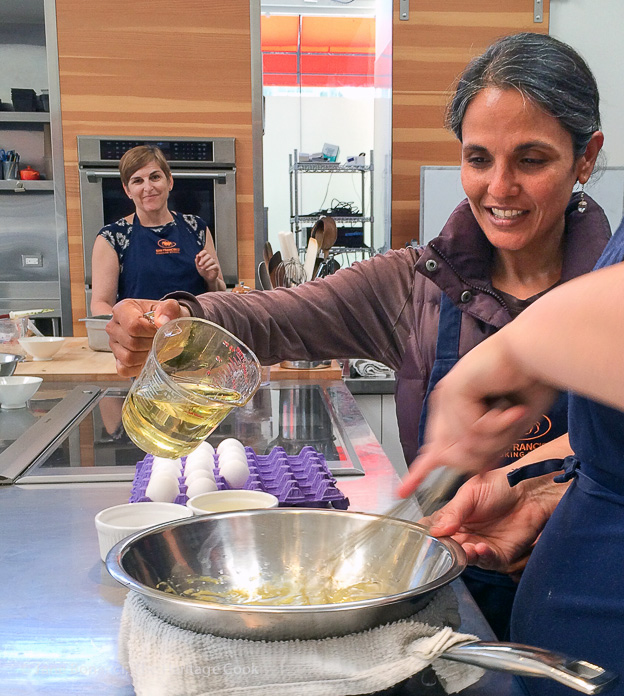
Helping Chef Goldberg make mayonnaise by hand
Classes are limited to just 14 students, guaranteeing close supervision by the chef instructor and focused attention. We were lucky to have two amazing chefs showing examples of a day in each of the Pastry Arts and Culinary Arts programs. Chef Kirsten Goldberg and Chef Nicole Plue.
Chef Goldberg has worked in some of the best restaurants in the country including Babbo in New York and Boulevard in San Francisco, kitchens in Europe and extensive travel in South East Asia. She has been an instructor with SFCS since it opened and brings a wealth of practical knowledge and enthusiasm to every class.
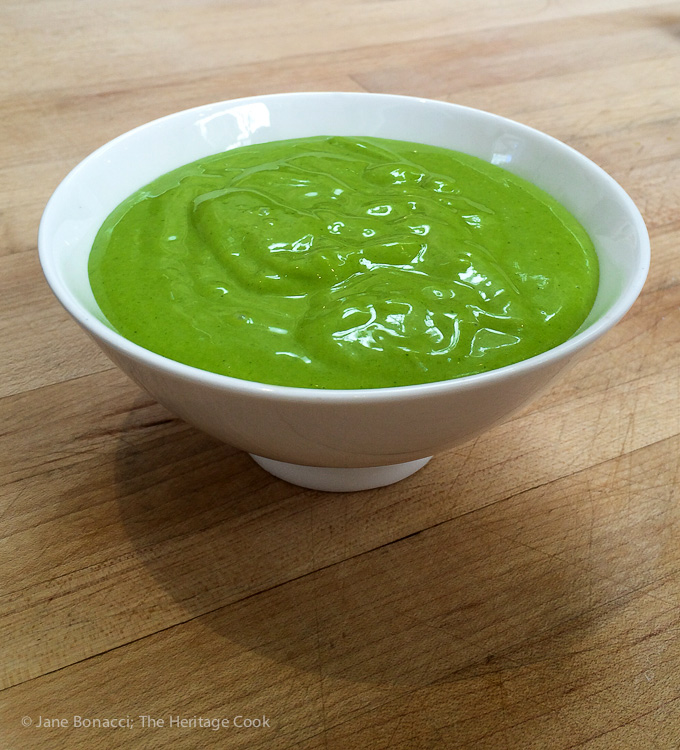
Our bowl of chive mayonnaise
With her guidance we had an herb tasting, experiencing the aromas and raw flavors of fresh herbs, something we seldom take the time to do. Then we pureed the herbs to make a flavored oil, and used the oil to make an herbed mayonnaise. The pure bright flavors of the fresh herbs burst through making ordinary mayonnaise totally passé! You can make your own version following the recipe below. And if you think you don’t like mayonnaise (like one of the gals in the class) you can thin it with more lemon juice or plain oil and totally change the texture, the likely cause of your normal squeamishness. Can you imagine the looks of pure joy on the faces of your family and friends when you arrive with jars of homemade herb mayonnaise? Oh yeah!
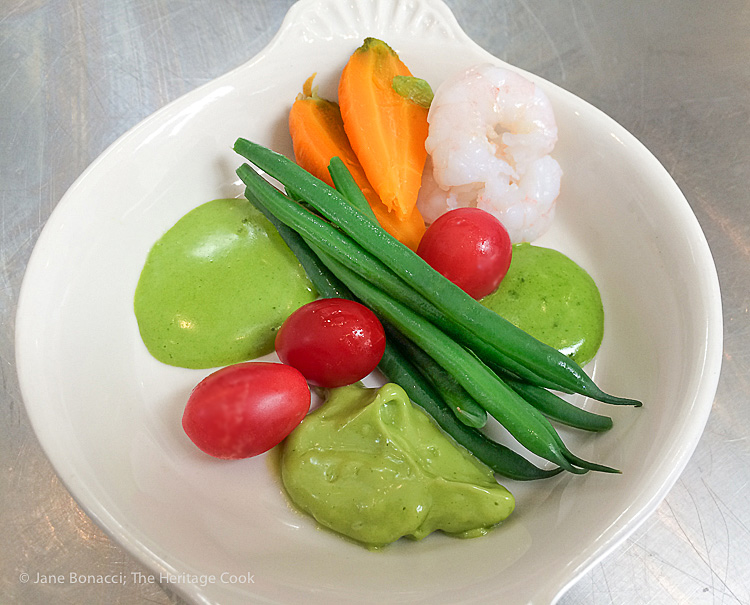
3 different herb mayonnaise flavors and vegetable appetizer
Chef Plue won the 2010 James Beard Award for Outstanding Pastry Chef, Pastry Chef of the Year 1997 by San Francisco Magazine and Rising Star Chef by the San Francisco Chronicle. She began her career by leading the celebrated bread program at Hawthorne Lane, moved to New York to open Danny Meyer’s Eleven Madison Park and set up their pastry program. She opened Terence Conran’s Guastavino’s, developed recipes for the pastry and baking segments for Martha Stewart Living Television, managed the pastry programs at 3-star AZ and Pazo. She came back to the West Coast and served as executive pastry chef at Julia’s Kitchen at COPIA in Napa, Redd, and Cyrus in Healdsburg before joining the staff at SFCS.
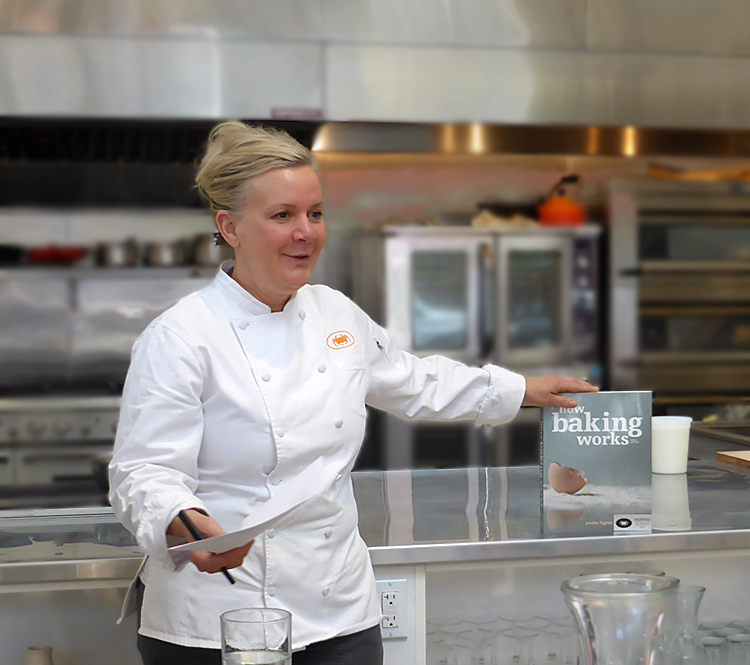
Chef Nicole Plue
Chef Plue showed us how to make butter from scratch (recipe below) as well as conducting a lesson in the flavors and behaviors of a wide variety of different fats. We baked off sugar cookies where the only difference was the type of fat used and then did a side-by-side taste test. It was fascinating to see how dramatic the differences were between the solid or malleable fats (like butter, lard, and shortening) and liquid fats (such as oils and clarified butter). Chef explained how each type of fat affects recipes and giving us the knowledge to know which one to use to get a specific texture in our baked goods.
I was very impressed with the effort to teach their students how to not only taste the ingredients and final products, but to be able to express why we liked or did not like something. Being able to say, “this needs more lemon” or “we should add more acid” instead of simply saying we didn’t like something is far more valuable to the team in the kitchen. Recipes improve when we can make specific recommendations to the chef or knowledgeably alter them in our own kitchens.
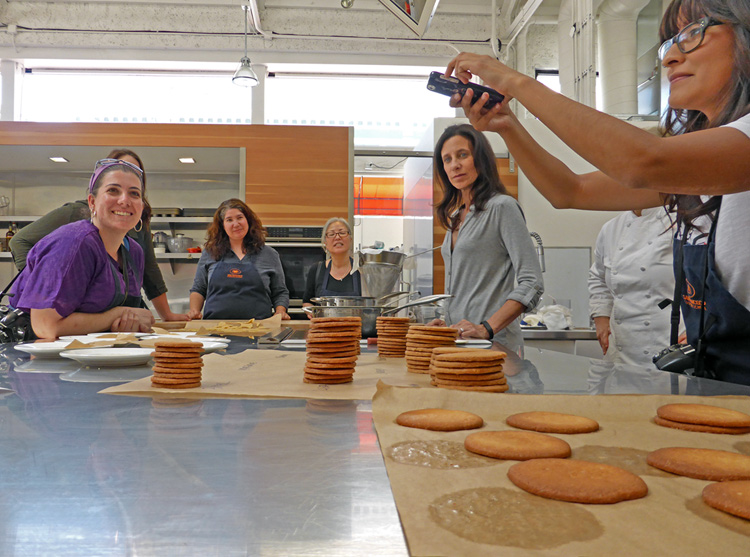
There are always photos to be taken whenever food writers get together
In addition to the full time professional programs, SFCS offers a part-time year-long program for those who need to continue working, as well as a wide variety of recreational hands-on cooking classes to help home cooks and enthusiasts increase their skills and expand their repertoires. Make sure you check out the upcoming class list – it is impressive! And follow them on Twitter (@sfcooking) and Instagram (@sfcooking) to keep tabs on everything that’s going on.
Thanks to Lisa Follmuth of Strum Simmer Sip, my Butter Buddy for sharing her photos. Thanks to Jodi, Heidi, Chefs Plue and Goldberg for hosting us and giving us a ‘taste’ of a day in the life of a SFCS student. It was delicious, fun, and informational. I can’t wait to join you again for a future class!
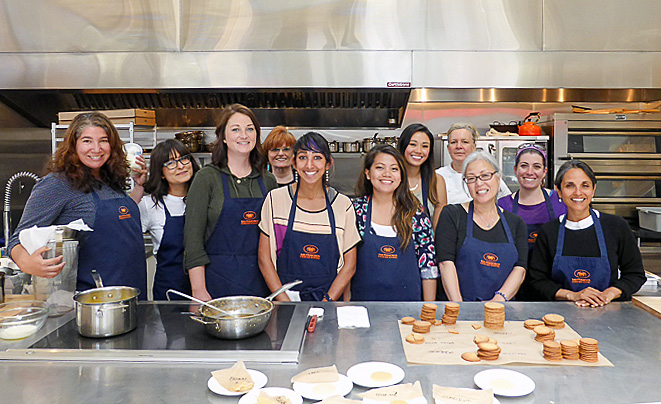
Happy faces after an afternoon at the San Francisco Cooking School
Create a New Tradition Today!
Disclosure: I was invited to attend two sample class sessions at the San Francisco Cooking School free of charge. I was not asked to write this article and did not receive any compensation. All opinions are my own.
Let’s connect! If you ever need any entertaining or cooking advice, need to alter a recipe for gluten-free, or want recipe suggestions, don’t hesitate to contact me. I can also be found at the social media site links on the right. Thanks for joining the Heritage Cook Family!
Unauthorized use, distribution, and/or duplication of proprietary material from The Heritage Cook without prior approval is prohibited. This includes copying and reprinting content and photographs. If you have any questions or would like permission, I can be contacted here. Feel free to quote me, just give credit where credit is due, link to the recipe, and please send people to my website. The suggestions here are not intended as dietary advice or as a substitute for consulting a dietician, physician, or other medical professional. It is the reader’s sole responsibility to determine which foods are appropriate and safe for their family to consume. The author makes no claims regarding the presence of food allergens and disclaims all liability in connection with the use of this site. Please see the Disclaimers page for additional details.
Thank You!
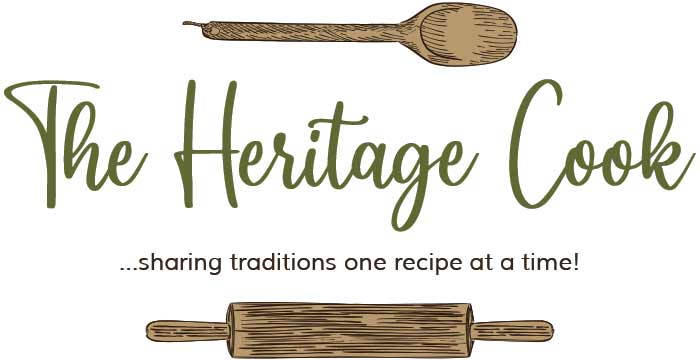


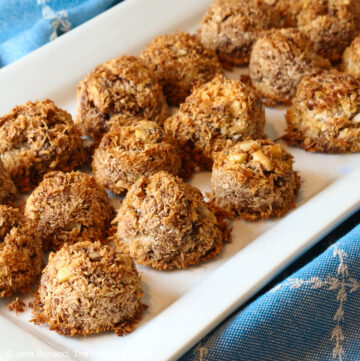
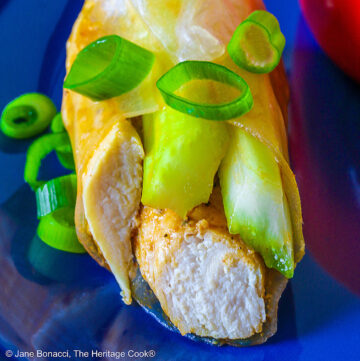
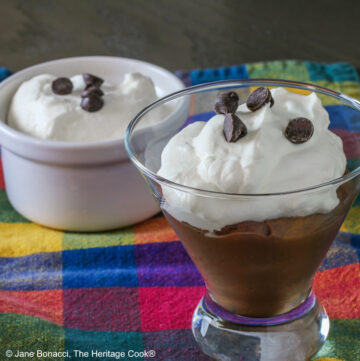
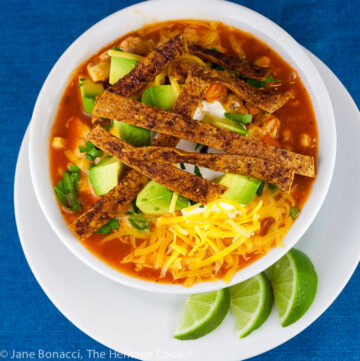
Stephanie @ The Glamorous Gourmet
OMG that chive mayonnaise looks positively DIVINE and if I learned how to make my own butter I’d probably never leave the house!!! Thanks for sharing your culinary adventures – thoroughly enjoyed reading ~ Cheers!
Jane Bonacci
The chives were really amazing and my personal favorite. You definitely need to make your own butter – it is SO easy! And so much better than anything you can buy. Go for it Stephanie and enjoy! 🙂